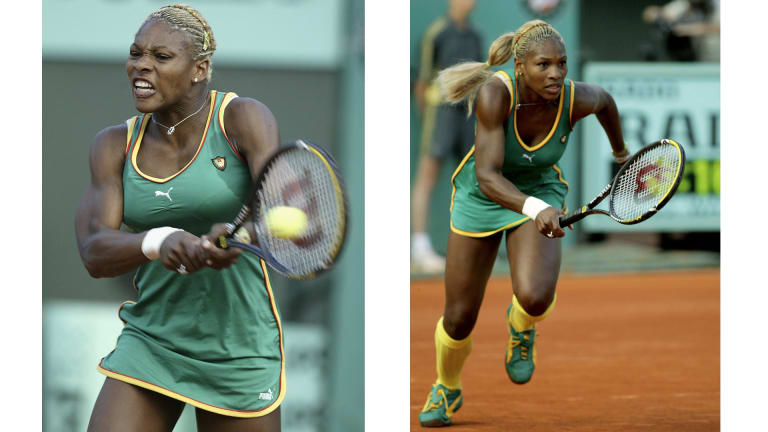Style Points
Style Points Flashback: Serena Williams wears banned Cameroon kit at 2002 Roland Garros
By May 30, 2022Style Points
Simple man Matteo Arnaldi 'privileged' by EA7 partnership, eyes future singlet fit from Armani
By Apr 26, 2025Style Points
FIRST LOOK: Coco Gauff to debut new Miu Miu x New Balance tennis collection in Rome
By Apr 23, 2025Style Points
Andre Agassi revisits some of his most iconic tennis outfits
By Apr 21, 2025Style Points
Outfit of the Day: Marat Safin brings cool-guy aura, and stylish sunglasses, to Monte Carlo
By Apr 10, 2025Style Points
This is why Emma Navarro won't ever wear a visor on the tennis court
By Apr 04, 2025Style Points
Naomi Osaka teases more iconic tennis kits: 'Treating every Grand Slam like the Met Gala'
By Apr 04, 2025Style Points
Zheng Qinwen guest edits 'W' magazine in China: 'Challenge accepted'
By Apr 03, 2025Style Points
Carlos Alcaraz says he “also wants to enjoy being 21” in upcoming Netflix docuseries
By Apr 03, 2025Style Points
Miami Open Fashion Roundup: Seven looks that ace South Florida style
By Mar 26, 2025Style Points Flashback: Serena Williams wears banned Cameroon kit at 2002 Roland Garros
It’s not often that the World Cup overlaps with the French Open. But when it happened in 2002, a 20-year-old Serena Williams turned heads with a classic Puma kit in support of the African champions.
Published May 30, 2022
Advertising

Serena's 2002 Roland Garros outfit was inspired by the Cameroon national team, from the yellow high socks to the scandalous sleeveless top.
© Getty Images/Composite
Advertising

Cameroon's sleeveless shirts were banned from the 2002 World Cup, but made an appearance during pre-tournament friendlies.
© 2002 Getty Images

By the final, Serena had swapped her Cameroon kit for a black and gold dress by Puma at the French Open.
© AFP via Getty Images